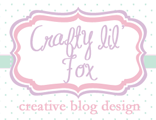If you include a lot of images in your posts, then you may find it useful to resize pictures manually to ensure they fit well on your page and it can help to balance them out so that the series of images are in proportion to each other. This offers more control than if you use the pre-set small, medium or large options that Blogger offers.
You may also find it useful to add image tags (also known as 'alt tags'). If you're unfamiliar with these tags, they are the pop up tags that often appear when you hover your mouse over the image. These are there for people who are unable to view the images, but they are also useful for getting your images to rank in search engines. If you have a website or blog that supports the sales of your handmade or other products, then this is a good way to help people find your blog or products via searches such as Google Images.
To resize your picture's manually, rather than using the small, medium or large, the first thing to do is upload your images. It is still worthwhile using the size the corresponds with the general size you wish to use, and then start to resize the images once they are on the blog.
The first step to change the image size is to click on the Edit HTML tab (no. 1).
Once you are on this screen, you then need to look for the width and height part of the code (no. 2). These may be grouped together or further apart, depending on your blog.
To resize the image, you need to change these numbers. One of the most important aspects of this is to ensure that you keep the proportions in balance as much as possible to prevent your picture from looking distorted.
In this second screen shot, you can see that I've changed the sizing to reduce the images roughly by half, bringing the size down from 810 x 720 to 404 x 362. (If you have an image that you wish to make bigger, be aware that this may result in fuzziness/image pixellation. )
Once you've done this, take a look in the preview and make further changes as necessary. The more familiar you are with this, the easier it will become for you to estimate sizes.
The final step I'm going to show is how to add in image tags to describe your pictures. To do this, look for the part of the code marked alt. Next to that between the " and " you can add a few words to describe your image. The more relevant these are also to your post content and overall blog content, the better it is for your blog or site SEO.
Once you've done all that - you can preview your post and if you're happy, it's ready to be published!
Snitches get Stitches
3 months ago












